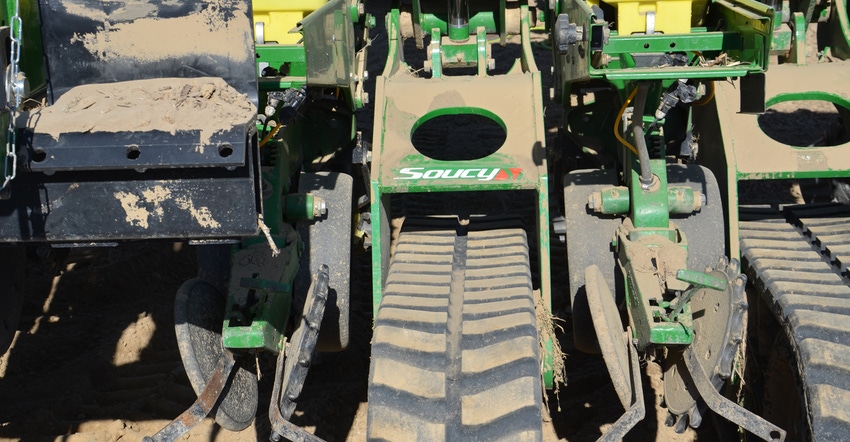November 30, 2018

We noticed corn in rows near the center of the planter didn’t look as good at harvest. We didn’t try yield checks. We have a center-fill planter. Is it worth investing in tracks for the planter to reduce compaction? Are there other options?
The Indiana certified crop advisers answering this question include: Andy Like, sales representative with Syngenta, Vincennes; Jeff Nagel, agronomist with Ceres Solutions, Lafayette; and Darrell Shemwell, agronomist with Posey County Co-op, Poseyville.
Like: I would suggest taking the time next year to do some yield checks across the planter width to quantify the amount of yield loss in the so-called “pinch rows” before you spend the money on tracks. Another idea is to upgrade to a wider planter so you have fewer rows affected by soil compaction. Your planting capacity would be greater, so you could wait until field conditions are better and reduce soil compaction that way.
Nagel: It’s worth investigating. One of the drivers of high corn yields is relatively uniform and consistent early-season plant stand establishment. Since large center-fill, wheel-based planters arrived on the market, there are several studies showing there can be yield losses associated with the pinch rows. Research using tracks on the planter generally show an improvement over wheels. The difference on whole-field improvement using tracks may be negligible, to around 5 to 10 bushels per acre better. Organic matter levels, clay content, moisture-holding capacity and planting conditions can all influence the amount of soil compaction. Additional weight from planter and/or starter fertilizer attachments can also play a role.
Do some research on available data to help you assess potential return on investment in tracks. Another approach would be to quantify potential yield impact on your farm. The challenge is matching up planter and corn head size. Find a local CCA who can help you design a way to gauge yield loss using planted and harvested data. The use of tracks and/or other planter technology like hydraulic downforce may indeed pay a return on investment.
Shemwell: Most growers here still run planters with tires, but a few have changed to tracks. We can have issues with pinch-row compaction. Under the right conditions, it can affect yield. I’ve seen studies that recorded yield losses of 3 to 12 bushels per acre under less-than-optimum conditions.
The question of investing in tracks is one I’m sure many growers have asked themselves. There are many factors to consider when trying to justify the additional cost. I’m told it could be $35,000 to $40,000 for a 24-row planter. Each individual would have to answer that question for his or her own farm. Some factors are number of corn acres planted, type of tillage situation, price of corn and soil types. Will you continue to move planting dates earlier? Do you have patience to wait a few days, so soils will be drier?
There are a few options instead of tracks. These may be as simple as adjusting tire pressure on planter transport tires or changing type of tire. Other options could be experimenting with types of closing wheels that might help reduce sidewall compaction. Pay attention to the amount of downforce pressure in wetter soils.
You May Also Like




